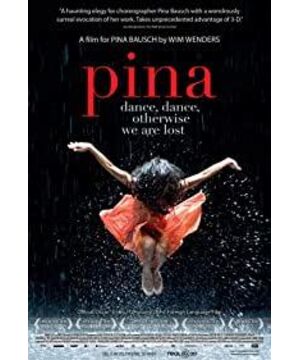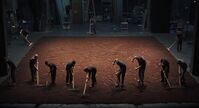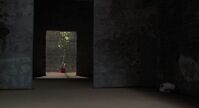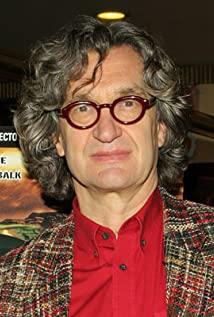Before Bina's death, Vin Wenders had the idea of co-producing a film with her. In 1985, Vin Wenders saw Bina's performance for the first time, which shocked him, who didn't know much about dance. He said, "I was in an emotion that I had never experienced before." Bina came up with the idea of making a movie. Over the years, as 3D filming technology matured, Vin Wenders finally found the best tool to interpret Bina's dance work, but Bina died suddenly before filming began. This sudden change made the entire shooting plan have to change direction. Vin Wenders decided to make a film different from the original idea, which is "PINA" that audiences see on the big screen.
Many people shy away when they hear "modern dance", thinking that it is an obscure form of artistic performance, but it is not. Lin Huaimin, the founder of Cloud Gate Dance Group, once mentioned that entering the theater is to feel and appreciate. From this perspective, modern dance is actually a very popular art, but watching modern dance is a very personal and private experience, because everyone has different feelings. In the film, Wen Wenders presents the four dances of Café Müller, Le Sacre du Printemps, Vollmond and Kontakthof. In the clip, through the 3D stereoscopic effect, the cinema suddenly becomes a theater. The dancers are lifelike in front of them, every move and every move, as well as the skin that rises and falls with the breath, and even the eyes and expressions of the dancers, all through the film lens. magnified in front of the audience. It's a wonderful experience that you can't get by sitting in a theater and watching a performance.
Wen Wenders interspersed with the dancers' face close-ups and voiceovers between the dance sequences, describing what they thought of Bina and how Bina affected them. Wen Wenders mentioned in the interview: "I can only bring the audience into the world of Bina Bausch through these dancers. They are like spokespersons for Bina." Therefore, we use the dancers' limbs The relationship with God was terrified, feared, suppressed, struggling, vulnerable, strong, happy, humorous by Bina... Bina showed herself naked in front of our eyes without reservation. Even if you don't know Bina, and you've never even heard her name, at this moment, you can't deny that you feel Bina's feelings strongly. At the end of the movie, Bina said, "Dance, dance... or we'll be lost..." Perhaps, dancing allowed Bina to explore her truest and deepest self.
In this documentary, you won't notice the presence of the director. Wen Wenders is not like the extreme ego of another German director, Werner Herzog. Intervene strongly in the film, but leave it to the dance itself and the dancers to interpret. However, this does not mean that Wen Wenders simply recorded, but did not create, he just chose a more smooth way of expression, hiding his creative hand marks in the film through a montage effect, young dancers and old dancers The constant interlacing in the same dance is an example.
In addition, I really like Wen Wenders' idea of moving the dance from the theater to the outdoors, dancers jumping on the grass, dancing in the river, running in the gravel desert, not only that, but also the safety island and the roadside. The suspended MRT carriage has also become a stage for dancers to stretch out. Vin Wenders has thoroughly integrated Bina's dance work into Wuppertal, which is also the center of Bina's work. This move not only implements Bina's idea of focusing on natural elements, but also breathes new life into the original dance work, especially when the dancers dance beside the empty factories and busy roads, there is an almost surreal conflict. taste.
"PINA" is a very special documentary. After watching this movie, you still have only a vague impression of Bina's appearance, but you seem to know the dancer and gain insight into her inner world from a closer and deeper perspective.
View more about Pina reviews








